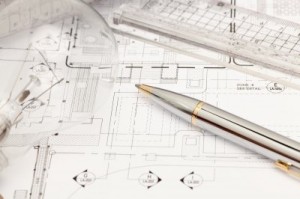The Importance of Accurate Specification Documentation
One of the most important aspects of reverse engineering during product development is making sure you have the right specification documents–because let’s face it, the customers will be upset if the design is bad–money, time, and effort will be wasted as you head back to the design drawing board to make changes in order to make the idea viable and lucrative to them.
It’s hard to imagine a product in industry that has not been developed from a design engineer’s specification at some point. The product statement should clearly outline what the system product should be capable of doing and its basic characteristics of design. Seems clear cut, right? Unfortunately, it’s not that simple, and the final results can vary quite a bit if the format for the specifications waver and don’t illustrate the accurate specifications that the market is looking for. This usually comes about from different expectations on both sides and ambiguities in communication, and there should be best practice methods and guidelines put into place to benefit development in your enterprise.
There’s five steps to consider when preparing accurate specification documentation for your prototype product:
Step 1: Communication
Often a customer will have a part that they chances characteristics on to make a new part. Be sure that any existing part specifications that they are jumping off from are well-understood by all parties involved, and there is clear communication and documentation being exchanged between everyone. This clears up any ambiguities or misunderstandings between the customer and your business.
For instance, if a customer has an existing part that they just want some dimensions changed on, they should provide an actual part or detailed drawing to you with existing specifications listed, so that you can use it to measure it and update the new parameters in a 3D CAD program and design it going forward.
Step 2: Preparation
There is an amount of preparation needed to define a product specification internally within teams and departments in your organization. The documentation should not be written solely from one person’s perspective and input should be taken from other teams to provide a more rounded and effective beginning for the design.
Step 3: Market Needs
Sales and Marketing will determine how much potential market share your product will potentially have, but the product specification asks how to address this market need. This area defines the purpose of the project to all involved in working with this documentation.
Step 4: User Scenarios
It’s important to envision use cases and scenarios, and not only for the people who will be using the product, but also for the people who will be shipping it and installing it. This will eliminate many problems with specifications that are usually attributable to use cases and user scenarios that are not taken into consideration that will be very difficult to fix later on in product development.
Step 5: Product Principles
It’s easy to lose sight of the product’s intended use as it goes through its evolution. Keep the mission of what the product is about and what it is intended for in the back of your collective mind as it is handed off through the different departments and finally to the external customer.
There’s not always an easy way to systematically establish requirements for specification documents to guarantee accuracy and completeness, but it’s vital that it’s done. It’s often more of an art, of course, than a science, but it’s critical in the first stages of the development life cycle. It must be taken care of in the beginning because unclear expectations and ambiguities in the requirements can often appear later on and will result in a great deal of increased effort and money spent to fix the issues in your prototype in able to move forward.
Elite Tech Engineering is an engineering design company which provides CAD drafting services. We understand the lingo of specification documentation.
Image courtesy of phasinphoto / FreeDigitalPhotos.net
read more
New Technology Makes Reverse Engineering Easier Than Ever
Technological innovations are almost always a good thing, and this concept paired with reverse engineering strategies is no exception. CAD packages are readily available to design engineers, and they can use the software on any existing physical part to make a 3D virtual model and tweak it to the specifications any client could wish for.
The lifecycle of the product from beginning development to end is incredibly important to an enterprise’s viability in the market, and getting the idea to design before your competitor, one of the first stages in development, is critical. One barrier that prevented many companies from doing this in rapid-fire succession was the daunting price of CAD software. Engineering companies, especially smaller organizations, need to keep production costs down and complete the development stage as quickly as possible. There’s reasons they are able to capitalize on doing this better and quicker now:
Reason # 1: Software is Less Expensive
A company’s software has to be thoroughly integrated with CAD, so that they have access to vital features needed via the CAD program. If you go back a few years, many designers got used to designing parts with software that companies paid thousands of dollars for. Now there are many programs out there are a lot cheaper than that, and the competition and advancements to the software has driven down costs. This results in fewer limitations to companies purchasing excellent software for new product development and allows for more companies to be able to do reverse engineering.
One of the first examples of this that come to mind, are two popular brands of 3D modeling applications used by designers today, ProE and Solidworks. Both are excellent 3D modeling software programs, with each having their own weaknesses and strengths. The winner hands down for cheaper cost is Solidworks, though. Google, who seem to have their hand in just about everything these days, is also offering up a new 3D CAD software named SketchUp, that is easy to use and powerful enough for veteran design engineers to use for duplicating their model and specifications. The professional version of SketchUpretails for about $500.
Reason #2: Hardware is Less Expensive
Another reason that reverse engineering has become easier and quicker to do, is that the price of scanners and other hardware that you use to input the product measurements has decreased. Manufacturers have also indicated that the hardware is becoming smaller and a lot easier to use. Reverse engineering is heavily dependent on both the software and hardware working together.
It is a perfect pairing between the two, and the hardware is then used to measure the object and later used to reconstruct it using 3D modeling software. Objects can also be measured with more advanced 3D scanning technologies, such as laser scanners, coordinate measuring machine, computed tomography, or a structured light digitizer.
There are many 3D CAD programs in place that takes what’s in your mind and converts it to reality, so that you can easily reverse engineer and design solid products in no time. The selections are increasing and becoming cheaper all the time, as well, for both software and hardware options that are vital to the reverse engineering process.
This process that was just limited to businesses that could pay the larger costs in the past is now spread out to more users because of better options and is leading to quicker design to market strategies for those that were shut out of this before. As technology advances, and competition becomes more fierce, the process may even become quicker in the near future.
For 3D CAD design services, contact Elite Tech Engineering.
Image courtesy of arztsamui / FreeDigitalPhotos.net
read more



 Call Us Now!
Call Us Now!